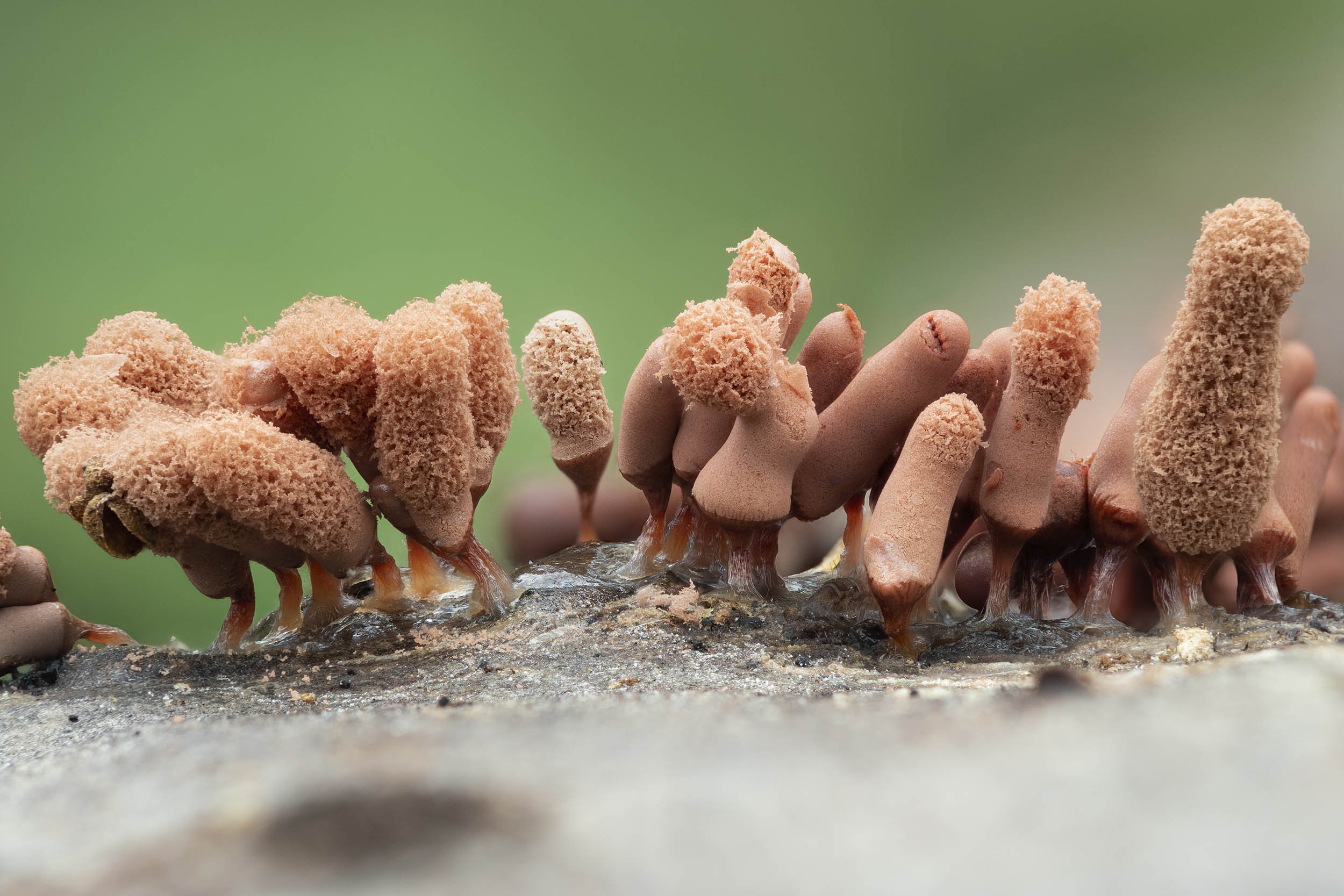Slime Mould
During my recent fungi search I also kept an eye out for slime mould. I’d seen photos of all kinds of weird and wonderful slime moulds in the past but figured they must be from other countries as I’d never seen anything like them before. It turns out the reason I’d never seen them before was because of how incredibly small they were. This little pink ball for example, was the first slime mould I aimed my camera at and even at full magnification, with an additional adapter on, I had to crop into the photo massively just to see this 0.7mm bonbon in more detail.
Slime Mould (likely Didymium species)
My little finger to help show just how small this particular slime mould was
It’s definitely true that once you get your eye in, you start to find them a lot more easily and realise just how much of it there is about, after a bit of rain. This yellow, balloon like, Trichia species I caught out of the corner of my eye on some leaf litter whilst photographing some other slime mould I found on a stick. The opaque part that tethers it to the ground almost looks like frozen water or a wave crashing, with the yellow from the slime mould in the background resembling the setting or rising sun, through the gap. I think this is one of the reasons why I have gravitated towards photographing slime mould recently. When they are so small and look so other worldly through the lens, far removed from anything else found in the woods with them, your brain can’t help but try and make sense of them by drawing these similarities (well mine can’t anyway) So if you happen to look at this photo and see a group of eggs that have been cracked in zero gravity, it’s an extra little bit of narrative that adds to the image and is unique to the viewer. That helps to make them more interesting to photograph, for me, and stops them purely being still life images. Even still life can’t really be applied to slime moulds, on the technicality that they are actually moving, just not at the same pace that most of my usual invertebrate subjects would be.
Slime Mould (Trichia species)
Another added bonus when photographing slime mould is not knowing what might turn up on the photos. Once you zoom into them or get them on the computer, more often than not you’ll see a spring tail, mite or some other creature that is so small, you were completely oblivious to it when you were taking the photo.
Slime Mould (Arcyria denudata)
The slime mould above has a tiny creature making a quick exit behind the closest structure, in the foreground, just off centre to the right. There is also what almost looks like a cockle shell on the left, not sure what that is.
These hotdog-esque moulds are at different stages, before and after they open up, revealing a fluffy fruiting body.
Slime Mould (Physarum sp)
This type of slime mould tends to grow in quite large numbers. These ones are relatively fresh in their development, with milky coloured caps. At this stage I have been told that a Physarum species is as specific as you can go with identifying it. The caps will change colour as it matures and make a more positive ID possible. It’s definitely another world and one you would have to spend a lifetime studying to better comprehend. For now, I’m just content to photograph them and will leave identification to the experts.





